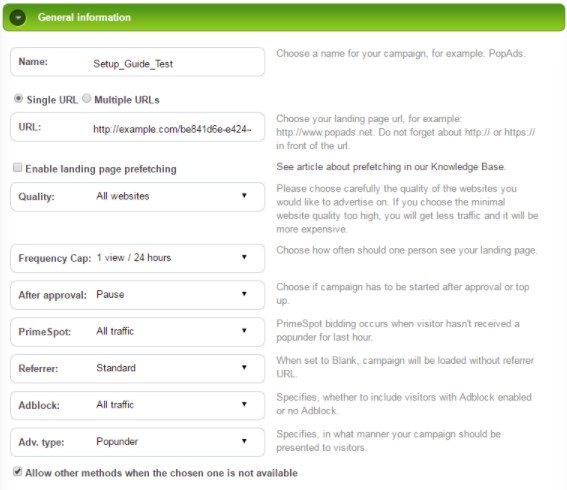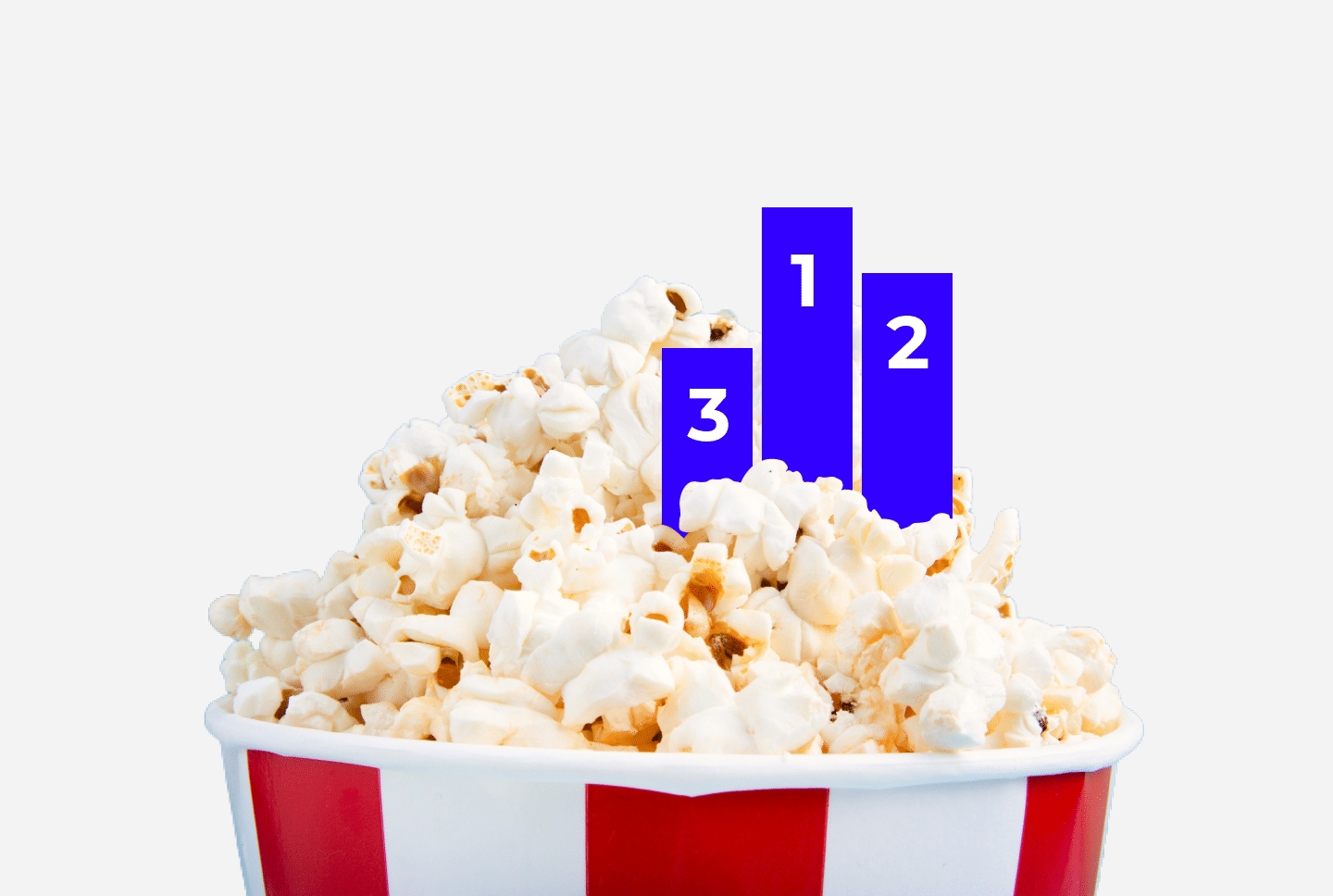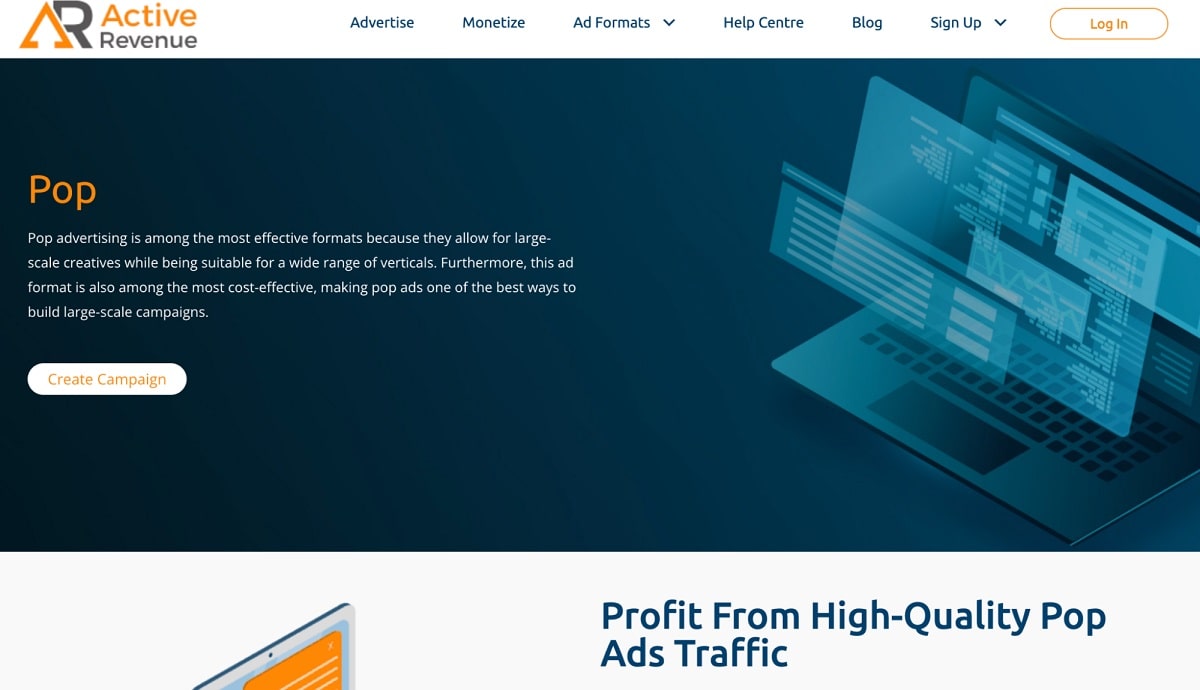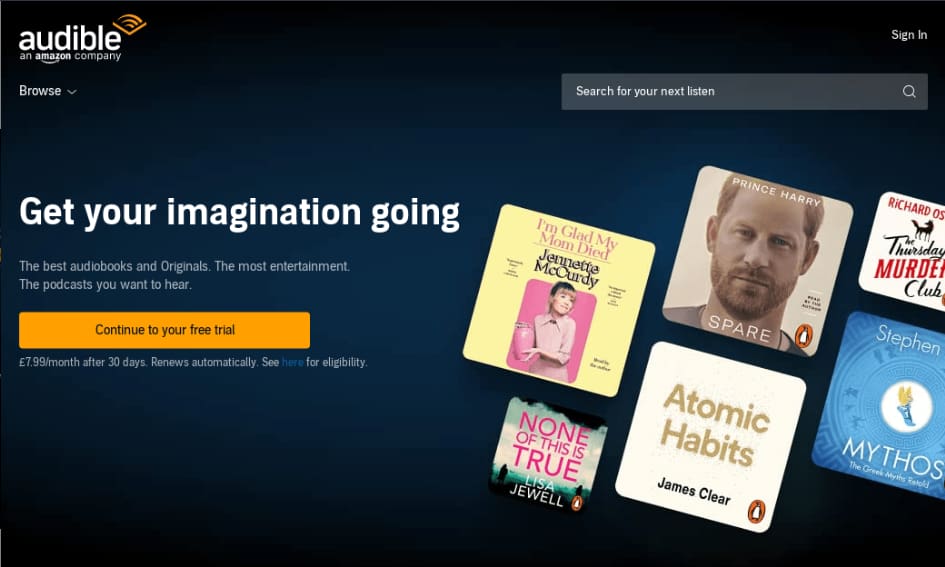Selecting the Perfect Pop Ads for Your Campaign
Buy CPC Traffic | Buy Display Ads | Exclusive traffic sources | Buy Push Ads | Popunder ADS | Buy Native Ads | Buy Preroll Ads

Buy CPC Traffic | Buy Display Ads | Exclusive traffic sources | Buy Push Ads | Popunder ADS | Buy Native Ads | Buy Preroll Ads
Pop ads have gained popularity in the digital advertising industry due to their ability to capture users' attention and generate high engagement rates. However, with so many types of pop ads available, it can be challenging to choose the best ones for your campaign.
The first step in selecting the right pop ads for your campaign is to define your goals and target audience. Are you looking to increase brand awareness, drive traffic to your website, or generate leads? Understanding your objectives will help you determine which types of pop ads are most suitable for your campaign.
Next, consider the different types of pop ads available:
Entry Pop-ups: These pop ads appear as soon as a user enters a website. They can be effective for grabbing attention, as the user's focus is solely on the ad. However, they can also be seen as intrusive, so consider using them sparingly.
Exit Intent Pop-ups: These pop ads are triggered when a user is about to leave a website. They can be highly effective in capturing the user's attention and potentially converting them before they navigate away. Consider using these pop ups to offer discounts, free trials, or other incentives to entice users to stay or make a purchase.
Timed Pop-ups: These pop ads are displayed after a specific amount of time spent on a webpage. They can be used strategically to engage users who have already shown interest in your content. Consider offering valuable resources or exclusive content through these pop ups to encourage user engagement.
Scroll Pop-ups: These pop ads appear when a user scrolls down a webpage. They can be effective in capturing attention and engaging users who are actively browsing the page. Consider using scroll pop ups to promote special offers, upcoming events, or relevant content.
Ultimately, the best pop ads for your campaign will depend on your specific goals, target audience, and budget. Conducting A/B testing can help you determine which types of pop ads are most effective in achieving your objectives. Additionally, monitoring and analyzing the performance of your pop ads will allow you to make data-driven decisions and optimize your campaign for better results.
By carefully considering your goals, target audience, and the different types of pop ads available, you can choose the best pop ads for your campaign and maximize its impact. Remember to always prioritize user experience and avoid overwhelming your audience with excessive pop ads. When used strategically and thoughtfully, pop ads can be a powerful tool to drive engagement and boost your campaign's success.
Understanding the Different Types of Pop Ads
When it comes to choosing the best pop ads for your campaign, it's important to understand the different types of pop ads and their benefits. Pop ads are a popular form of online advertising that allow advertisers to display their content in a new window or tab when a user interacts with a website. Here are some of the most common types of pop ads:
Pop-ups: Pop-up ads are small windows that appear on top of the current webpage, often with a call-to-action or a promotional offer. These ads are typically triggered by clicking on a link or button on the website.
Pop-unders: Pop-under ads are similar to pop-ups, but instead of appearing on top of the current webpage, they are displayed underneath. They are less intrusive and can be seen when the user closes the current webpage.
Interstitial ads: Interstitial ads are full-page ads that appear between pages or content within a website. They are displayed before the user can access the desired content, grabbing their attention and increasing visibility.
Exit-intent pop-ups: Exit-intent pop-ups are triggered when a user is about to leave a website. These ads can help capture the user's attention before they exit and encourage them to stay or take a specific action.
Mobile pop ads: With the rise of mobile devices, mobile pop ads have become increasingly popular. These ads are specifically designed for mobile devices and can be displayed as pop-ups or interstitial ads, ensuring maximum reach on mobile platforms.
Each type of pop ad has its own advantages and disadvantages, so it's important to choose the right type based on your campaign goals and target audience. By understanding the different types of pop ads, you can make informed decisions when creating your advertising strategy.
Researching the Target Audience for Your Campaign
Before launching a pop ad campaign, it's crucial to research and understand your target audience. This process will help you tailor your ads to their preferences, maximizing the chances of engagement and conversions. Here are some steps to guide you in researching your target audience:
Define Your Target Audience

The first step is to clearly define who your target audience is. Consider factors such as demographics (age, gender, location), interests, and online behavior. Understanding their characteristics will help you create ads that resonate with them and increase the likelihood of conversion.
Conduct Market Research
Conducting market research is essential to gather insights about your target audience. Use surveys, interviews, and social media polls to gather information on their preferences, needs, and pain points. This research will help you develop ad content that addresses their specific challenges and desires.
Tip: Analyze competitor ads to gain additional insights into what works for your target audience. Look for common themes, messaging styles, and types of offers that resonate with them.
Segment Your Audience

Segmenting your audience into smaller groups based on their interests and characteristics can help you create more targeted and personalized pop ads. This approach will allow you to deliver the right message to the right audience, increasing the chances of engagement and conversion.
Keep in mind that audience segmentation may require additional research and analysis, as you'll need to understand the specific needs and behaviors of each segment.
Monitor and Analyze Performance
Once your campaign is live, closely monitor its performance and analyze the data to gather insights about your audience. Track metrics such as click-through rates, conversion rates, and engagement levels to understand which ads are performing well and resonating with your target audience.
Remember: A/B testing different ad variations can help you understand what elements and messaging are most effective for different segments of your target audience.
By thoroughly researching your target audience, you can ensure that your pop ads are highly relevant and influential. Understanding their preferences and needs will allow you to create high-performing campaigns that drive conversions and achieve your advertising goals.
Considering the Budget and ROI for Your Pop Ads

When choosing the best pop ads for your campaign, it is essential to consider your budget and the potential return on investment (ROI) you can expect. Understanding how to allocate your budget effectively and evaluate the ROI of your pop ads will help you make informed decisions and optimize your advertising campaign.
Setting a Budget

Before diving into the world of pop ads, it is crucial to establish a budget that aligns with your advertising goals and overall marketing strategy. Consider the following factors when setting your budget:
Advertising Goals: Clearly define your objectives, whether it's to increase website traffic, generate leads, or improve conversions. Your goals will influence the size of your budget.
Target Audience: Research and identify your target audience. Understanding their demographics and online behaviors will help you allocate your budget more effectively.
Industry and Competition: Evaluate your industry's competitiveness and the advertising budgets of your competitors. This will help you determine an appropriate budget to remain competitive.
Pricing Models: Consider the various pricing models available for pop ads, such as CPM (cost per impression) or CPC (cost per click). Understanding these models will allow you to estimate costs and plan accordingly.
Evaluating ROI
ROI is a critical metric for assessing the success of your pop ads campaign. To evaluate ROI effectively, consider the following:
Data Tracking: Implement tracking mechanisms to monitor the performance of your pop ads accurately. This will provide you with data on clicks, conversions, and other relevant metrics.
Conversion Rate: Calculate the conversion rate by dividing the number of conversions by the number of clicks. This will help you assess how effective your pop ads are at driving desired actions.
Revenue: Compare the revenue generated from your advertising campaign with the amount spent on pop ads. This will give you a clear picture of your return on investment.
A/B Testing: Conduct A/B testing to compare the performance of different pop ad variations. This will help you identify the most effective ads that deliver the highest ROI.
By taking into account your budget and evaluating the ROI of your pop ads, you can optimize your advertising strategy and ensure that you are getting the most value from your investment. Regularly analyze and adjust your campaigns based on the data and insights gained to continually improve results.
Examining the Performance Metrics of Pop Ads

When it comes to running an ad campaign, it's crucial to monitor and analyze the performance metrics of your pop ads. By examining these metrics, advertisers can gain valuable insights into the effectiveness of their campaigns and make data-driven decisions to optimize their advertising efforts.
Here are some key performance metrics to consider when evaluating the success of your pop ads:
Click-Through Rate (CTR): CTR is the ratio of ad clicks to ad impressions. It indicates how often users are clicking on your ad after seeing it. A high CTR generally indicates that your ad is engaging and relevant to your target audience.
Conversion Rate: Conversion rate measures the percentage of users who take a desired action after clicking on your ad. It could be completing a purchase, filling out a form, or subscribing to a newsletter. A high conversion rate indicates that your ad is effectively driving valuable actions.
Cost Per Action (CPA): CPA measures the cost of acquiring a specific action, such as a purchase or a lead. It helps determine the efficiency and profitability of your ad campaign. Lower CPA indicates better performance and higher return on investment.
Viewability: Viewability measures whether an ad is actually seen by users. It's essential to ensure that your pop ads are being displayed in a way that can grab users' attention and generate engagement.
Engagement: Engagement metrics, such as average time spent on the landing page or the number of page views per user, provide insights into how users interact with your ads. Higher engagement suggests that users find your ad content and landing page relevant and interesting.
Return on Investment (ROI): ROI measures the profitability of your ad campaign and compares the revenue generated to the cost of running the ads. It helps determine whether your advertising efforts are delivering a positive return or if adjustments need to be made.
By regularly tracking and analyzing these performance metrics, advertisers can fine-tune their pop ads and optimize their campaigns for better results. Utilizing advanced targeting options, optimizing landing pages, and adjusting bidding strategies can all contribute to enhancing the performance of your pop ads.
For advertisers looking to leverage the power of RTB advertising for pop ads, TrafficStars offers a reliable platform that provides access to a vast network of publishers and advanced targeting options.
Testing and Monitoring the Performance of Various Pop Ads

When running a pop ad campaign, it's crucial to regularly test and monitor the performance of different ads to optimize your results and achieve maximum effectiveness. Testing and monitoring allow you to identify which pop ads generate the most conversions, click-through rates, and overall success for your campaign objectives.
Here are some steps to follow when testing and monitoring the performance of your pop ads:
1
Define Clear Objectives
2
Create Multiple Variations
3
Split Testing
4
Track Metrics
5
Analyze Results
1. Define Clear Objectives: Clearly define the goals and objectives of your pop ad campaign. Determine what metrics matter most to you, such as conversion rates, click-through rates, or ROI.
2. Create Multiple Variations: Design different versions of your pop ads with varying elements, including headlines, images, call-to-action buttons, or colors. This allows you to identify which variations perform better.
3. Split Testing: Implement A/B testing by splitting your audience into segments and showing each segment a different version of your pop ads. This helps you compare the performance of different ads and make data-driven decisions.
4. Track Metrics: Use tracking tools or platforms to collect data on the performance of your pop ads. Monitor important metrics like impressions, clicks, conversions, bounce rates, and time on page to gain insights into their effectiveness.
5. Analyze Results: Analyze the collected data and compare the performance of different pop ads. Identify trends, patterns, and correlations to determine the most successful ads. Based on the results, optimize your campaign by focusing on the best-performing ads and making necessary adjustments.
Regularly testing and monitoring your pop ads is essential for improving your campaign's performance and achieving your objectives. By implementing these steps, you can make informed decisions, optimize your ads, and ultimately drive higher conversions and engagement.
For more information on web traffic buy click here.
Optimizing and Scaling Your Pop Ads for Maximum Results

1. Conduct thorough research on your target audience: Before optimizing and scaling your pop ads, it is essential to have a deep understanding of your target audience. Conducting thorough market research and analyzing your audience's demographics, interests, and behaviors will help you create more targeted and effective pop ads.
2. Use compelling visuals: The visual aspect of your pop ads plays a crucial role in grabbing the attention of your audience. Use eye-catching images, colors, and designs to make your pop ads visually appealing and engaging. Test different visuals to determine which ones resonate the most with your target audience.
3. Craft compelling ad copy: In addition to visuals, the ad copy is equally important in grabbing your audience's attention. Use persuasive and concise language to create compelling ad copy that clearly communicates your message and entices users to take action. A strong call-to-action can significantly improve the performance of your pop ads.
4. Implement A/B testing: A/B testing is an effective method to identify what elements are driving the best results for your pop ads. Test different variations of your pop ad elements, such as images, headlines, and call-to-actions, to determine which combinations are most effective at driving conversions and achieving your campaign goals.
5. Optimize landing pages: Once users click on your pop ads, it is crucial to provide them with a seamless and relevant landing page experience. Optimize your landing pages by making them load quickly, ensuring a clear and concise message, and including a straightforward conversion process. A well-optimized landing page can significantly improve the overall performance of your pop ads.
6. Monitor and analyze performance: Continuously monitor and analyze the performance of your pop ads to identify areas for improvement and optimization. Keep a close eye on key metrics like click-through rates, conversion rates, and return on investment. Use this data to make data-driven decisions and optimize your pop ads for maximum results.
7. Scale your campaign gradually: Once you have optimized your pop ads and achieved positive results, you can start scaling your campaign gradually. Increase your budget and expand your target audience slowly to ensure that your ads maintain their effectiveness. Monitoring the performance closely during the scaling process will help you make necessary adjustments and ensure continued success.
By following these optimization and scaling strategies, you can maximize the results of your pop ads campaign and improve your overall return on investment. Remember to continuously test, analyze, and optimize your ads to stay ahead of the competition and reach your campaign goals.
What are pop ads and why are they important for a campaign?
Pop ads are a form of online advertising that appear in a new browser window or tab when a user visits a website. They are important for a campaign because they can effectively reach a large audience and generate high conversion rates.
How do I choose the best pop ads for my campaign?
Choosing the best pop ads for your campaign involves several steps. Firstly, you need to clearly define your target audience and campaign objectives. Then, you can research different ad networks and publishers to find ones that align with your goals. Finally, you can test and optimize your ads based on their performance to ensure maximum effectiveness.
What factors should I consider when selecting an ad network for pop ads?
When selecting an ad network for pop ads, it's important to consider factors such as the network's reputation, the reach and quality of their publishers, the targeting options available, and the pricing model. It's also helpful to read reviews and testimonials from other advertisers to get an idea of the network's performance.
Are there any specific targeting options that I should look for when choosing pop ads?
Yes, there are several targeting options that can help you reach the right audience with your pop ads. Some common targeting options include demographic targeting (age, gender, location), behavioral targeting (interests, browsing history), and device targeting (desktop or mobile). Depending on your campaign objectives, you may prioritize certain targeting options over others.
How can I optimize my pop ads for better performance?
To optimize your pop ads for better performance, you can experiment with different ad formats, headlines, visuals, and calls-to-action. It's also important to track and analyze the performance metrics of your ads, such as click-through rates and conversion rates, and make adjustments accordingly. Additionally, you can consider using A/B testing to compare different versions of your ads and determine which ones are most effective.
What are pop ads and why are they effective for campaigns?
Pop ads are a form of online advertising that appear in a new browser window or tab. They are effective for campaigns because they capture the attention of users by interrupting their browsing experience and displaying a message or offer.
How can I choose the best pop ads for my campaign?
There are several factors to consider when choosing pop ads for your campaign. Firstly, you should consider your target audience and select ads that will appeal to them. Secondly, you should consider the timing and frequency of the ads, as well as their design and format. It's also important to test different ads and track their performance to determine which ones are the most effective for your campaign.
Buy CPC Traffic | Buy Display Ads | Exclusive traffic sources | Buy Push Ads | Popunder ADS | Buy Native Ads | Buy Preroll Ads
2022-2024 @ How to Choose the Best Pop Ads for Your Campaign